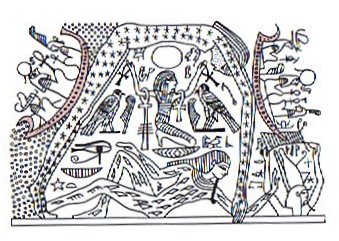4. Our updated
tagata variants are now
5 in number:
 |
 |
 |
 |
 |
|
tagata |
tagata gagana |
tagata
rima
aueue |
tagata rima i ruga |
tagata haro |
We need
to describe our ideas
regarding tagata rima i
ruga while the subject
is still fresh in mind:
 |
Upraised
arms can
be a
sign of
welcoming:
"...
After
passing
this
valley
we saw a
number
of men
collected
upon a
hill
some
distance
from us
and some
with
spears
but on
the
people
which
were
with us
calling
to them
they
dispers'd
except a
few
amongst
which
was a
man
seemingly
of some
note, he
was a
stout
made man
with a
fine
open
countenance,
his face
painted,
his body
tatowed
and some
thing
whiter
than the
rest and
he wore
a better
ah-hou,
with
both
hands
clinch'd
lifting
them
over his
head,
opening
them
wide and
leting
them
fall
gradually
down to
his
sides,
they
told us
he was
the
arekee
of the
Island
which
they
call'd
Wy-hu,
this
they
seem'd
all to
agree in
..." (J.
C.
Beaglehole,
The
Journals
of
Captain
Cook II:
The
Voyage
of The
Resolution
and
Adventure
1772-1775.) |
|
tagata rima i ruga |
|
man with
upraised
arms |
|
solstice |
|
The
Egyptian
sign of
upraised
arms
suggests
a
solstice:
 |
 |
 |
| Ca5-24 (129) |
Ca5-31 (136) |
| tuu te rima i ruga |
haro rima i ruga |
| Haro To pull; popohaga o te rua raŠ, i haro i te aka o te miro, on the morning of the second day, they pulled up the anchor of the boat. Vanaga.
a. to point, to raise the arm, to stretch out the hand or other member, to spread, to point the yards. b. to hoist, to pull up, to entice. c. to stiffen, to grasp, to squeeze. Haroharo, to point, to limp. PS Sa.: falo, to stretch out. To.: falo, to stretch out, to make tense. Fu.: falo, to stretch out, to lay hands on. Churchill. |
| The ancient names of the month were: Tua haro, Tehetu'upķ, Tarahao, Vaitu nui, Vaitu poru, He Maro, He Anakena, Hora iti, Hora nui, Tagaroa uri, Ko Ruti, Ko Korů. |
|
|
At the
beginning
of side
a on the
G tablet
a
tagata
rima i
ruga
glyph
apparently
is drawn
in a way
which
connects
it with
both the
preceding
and the
following
glyphs:
|
I think it is
necessary to have some relevant
examples from the rongorongo
texts at each of the glyph types
in a dictionary. Such examples
must have comments, but limited
in extent. It would for instance
go too far to speculate upon
what the small dangling 'balls'
at left in tagata might
mean:
|














